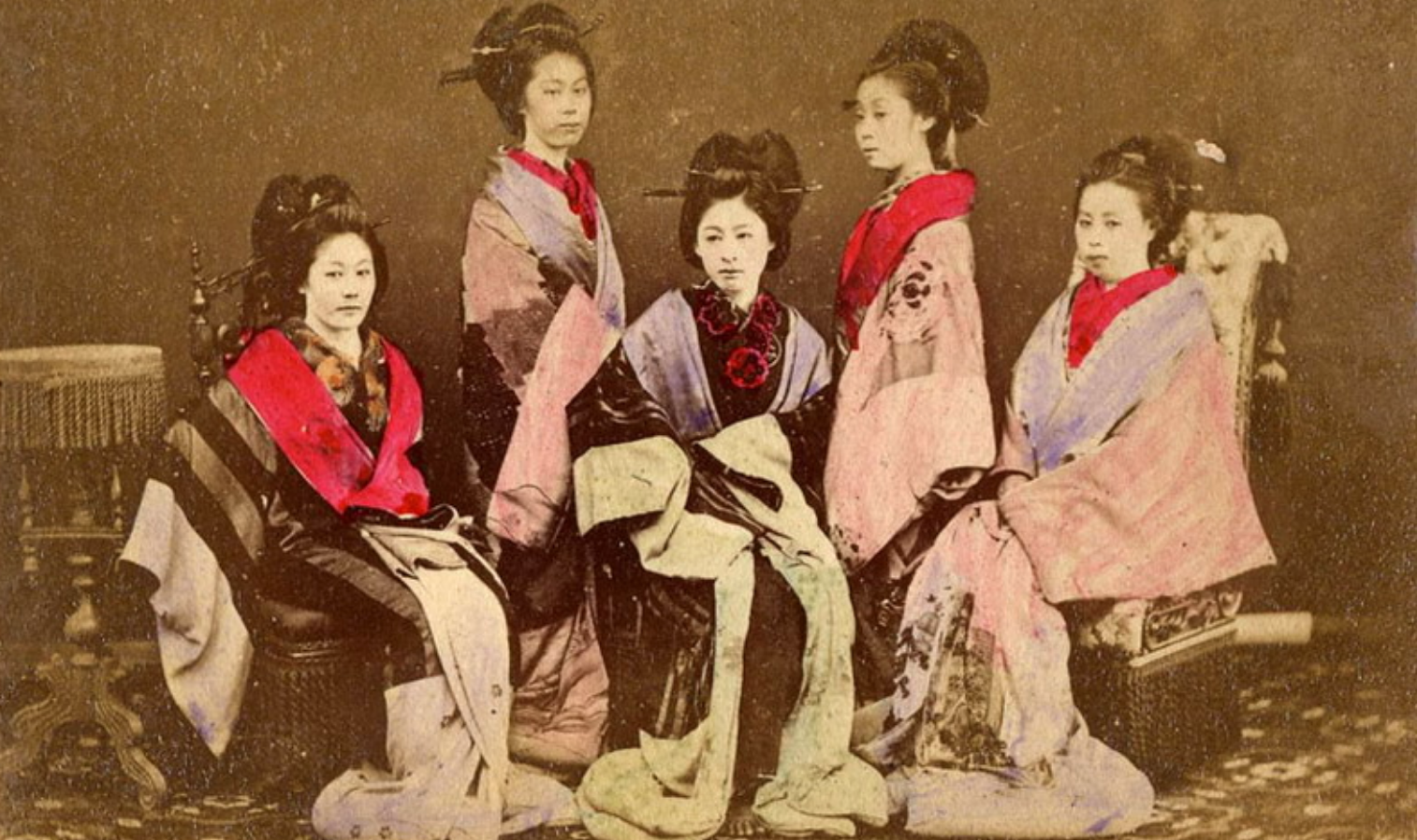Canceled for Questioning the Story on ‘Comfort Women’
Two professors argue based on documentary evidence that the Japanese did not forcibly conscript Korean women to be prostitutes. The post Canceled for Questioning the Story on ‘Comfort Women’ appeared first on The American Conservative.

Canceled for Questioning the Story on ‘Comfort Women’
Two professors argue based on documentary evidence that the Japanese did not forcibly conscript Korean women to be prostitutes.

There are two separate stories in The Comfort Women Hoax: A Fake Memoir, North Korean Spies, and Hit Squads in the Academic Swamp by J. Mark Ramseyer of Harvard Law School and Jason M. Morgan of Reitaku University in Japan. The first is the historical question of what exactly happened to the Korean women who worked in the brothels of the Japanese military in Asia in the 1930s and ’40s. The second is the contemporary saga of two scholars (one of whom sometimes writes for The American Conservative) who attempted to follow the facts in answering that question and found themselves on the wrong side of a politically correct mob.
If you pick up an American textbook, its description of “comfort women” is likely to go something like this (from Traditions & Encounters: A Global Perspective on the Past by Herbert Ziegler and Jerry Bentley, published by McGraw-Hill):
The Japanese army forcibly recruited, conscripted, and dragooned as many as 200,000 women age 14 to 20 to serve in military brothels, called “comfort houses” or “consolation centers.” The army presented the women to the troops as a gift from the emperor, and the women came from Japanese colonies…and from occupied territories…in southeast Asia. The majority of the women came from Korea and China. Once forced into this imperial prostitution service, the “comfort women” catered to between twenty and thirty men each day. Stationed in war zones, the women often confronted the same risks as soldiers, and many became casualties of war. Others were killed by Japanese soldiers, especially if they tried to escape or contracted venereal diseases. At the end of the war, soldiers massacred large numbers of comfort women to cover up the operation.
Ramseyer and Morgan argue that almost everything in this paragraph is false. The plurality of comfort women were Japanese, not Korean or Chinese. Most comfort women were in their late teens or early 20s. The total number was more likely 20,000. The average duration of a contract was two years, with many women released early because they had earned back their advance after only one and a half years. No evidence of any massacre has ever been found; the story originated with Japanese politician Seijuro Arafune, who was notorious for wild hyperbole.
Most controversially, they assert that the Japanese military did not forcibly conscript women to work as prostitutes. “Some of the comfort women had been sold into this prostitution by abusive parents. Some had been defrauded by dishonest private recruiters,” Ramseyer and Morgan admit. “But many—probably most—were desperately poor women who deliberately chose to sell sex for the money. They worked in a wretched job, but they were not ‘sex slaves. They were not ‘gang-raped.’ They were not conscripted into the job at bayonet-point.”
To support their version of history, Ramseyer and Morgan have a great deal of evidence: newspaper advertisements for comfort women positions; boilerplate employment contracts for brothels; diaries of brothel employees who worked side-by-side with comfort women; government regulations specifying “working hours, days off, terms of employment, and conditions of travel to and from the comfort station.”
They also appeal to common sense. Comfort women received upfront cash payments of 500 to 1,000 yen at a time when the average salary for a Japanese army sergeant was 30 yen per month. With that kind of money to be made, and few other opportunities available, surely there would have been enough poor women willing to undertake such contracts without the need to resort to kidnapping.
The alternative view—that Japan systematically dragooned young girls through violence and deception—came out of nowhere in 1983 in the fabricated memoir of a Japanese communist calling himself Yoshida Seiji, who claimed to have personally “hunted” comfort women in Korea. Ramseyer and Morgan call Yoshida “a compulsive liar” and his memoir a “hoax.” Yoshida admitted before his death in 2000 that much of it was made up. Even the left-leaning Asahi Shimbun, which publicized Yoshida’s claims extensively in the 1980s, admitted in 2014 that his story was “fraudulent” and retracted the articles.
Yet by then the story had been laundered into the public record through republication in human rights reports by the United Nations and Amnesty International. In 1993, the Japanese government issued the Kono Statement in a vain effort to bring a close to the controversy, stating that comfort women had been recruited “against their own will, through coaxing, coercion, etc.”
In the early 1990s, several former comfort women came forward to sue the Japanese government for compensation. An organization called the Korean Council for Women Drafted for Military Sexual Slavery (recently renamed the Korean Council for Justice and Remembrance) quickly stepped in to lead this movement. It promoted the small number of women who claimed to have been forcibly abducted and attacked and intimidated those who deviated from the maximalist line. The Korean Council today funds comfort women memorial statues around the world and organizes a weekly protest outside the Japanese embassy in Seoul. It also controls the nursing home where many of these former comfort women reside.
When Korean scholar Park Yu-ha visited this nursing home in 2003, she wrote, “I could sense that women were not happy being confined in this place. One of the women (Bae Chun-hee) told me she reminisced [about] the romance she had with a Japanese soldier. She said she hated her father who sold her. She also told me that women there didn’t appreciate being coached by [the Korean Council] to give false testimonies but had to obey [the Council’s] order.”
The Council also has leverage over these women through the welfare payments that were offered to former comfort women in exchange for refusing the Japanese government’s financial compensation in 1995. According to the Korean-American scholar C. Sarah Soh, many former comfort women “have firmly refused to be further interviewed…out of fear of making ‘speech errors’ that might lead to the cancellation of their registration and hence the cessation of their welfare support money.”
One former comfort woman, who for decades was the Korean Council’s star witness, was Lee Yong-soo. Her story has varied considerably over the years, not just in small details like her age (variously 14, 15, or 16) but in whether she was enticed willingly by a man who offered her a red dress and leather shoes or “taken away at age 14 at the point of a sword” as she claimed in front of the Japanese Diet in 2002. Recently Lee has broken with the Korean Council, accusing its leaders of financial malfeasance and saying she had been “used” and “deceived.” In response, the Council has pointed to the inconsistencies in Lee’s story, hinting that it was fabricated.
Yoon Mee-hyang, longtime head of the Korean Council, was convicted of embezzling money from the group in 2023. Far more importantly, she has extensive ties to North Korea. “The very year that she joined the Council’s leadership, South Korean police arrested her husband, Kim Sam-seok, and his younger sister for spying for the North,” Ramseyer and Morgan write. “The two had gone to Japan, met with a North Korean agent, passed documents, and received money.” The younger sister’s husband was also later sent to prison for spying.
This is the key to the puzzle that will make the story fall into place for American readers, who no doubt wonder why so many people would go to such lengths to police history if not out of concern for the truth. Their goal is to drive a wedge between Japan and South Korea and to prevent South Korea from tilting decisively toward the U.S. and Japan and away from North Korea and China. It’s not culture war. It’s geopolitics.
In 2020, Ramseyer published “Contracting for Sex in the Pacific War” in the International Review of Law and Economics, in which he made many of the arguments summarized above. The consequences were swift and severe. Within months, he had been denounced by many of his Harvard colleagues, attacked in the pages of the New Yorker, and even called in by the executive committee of his Mennonite congregation to explain himself, after which “the council made it clear that [he] was no longer welcome at the church.”
Morgan’s cancellation occurred a few years earlier, when he was only a graduate student. In 2015, he wrote a letter to the newsletter of the American Historical Association suggesting that Americans should take more seriously the work done by Japanese scholars casting doubt on the comfort women’s more extreme claims. Shortly after, his PhD adviser dropped him with no explanation. Her replacement later turned out to be sabotaging Morgan’s career by writing in her recommendation letters that Morgan had “became known on both sides of the Pacific” for “supporting Prime Minister Abe’s whitewashing of Japan’s wartime past.” Morgan only became aware of this when a copy of her letter was returned to him by mistake. In person, she had been all sunshine and encouragement.
In 2018, Morgan’s translation of the book Comfort Women and Sex in the Battle Zone by Japanese scholar Ikuhiko Hata was published by an imprint of Rowman & Littlefield. As was customary, news of its publication was announced by his department on its social media. Those posts were taken down after a university administrator wrote an email (which Morgan later FOIA’d) asking if the announcement was “problematic.” His adviser—the recommendation letter saboteur—replied: “I was shocked to see it on Facebook. Please take it down.”
These cancellations, bad as they are, are nothing compared to what scholars face in South Korea, where professors have gone to prison for dissent on this issue. In 2017, physics professor Song Dae-yup stated in his classroom that comfort women “probably had a clear idea what they had to do.” He was prosecuted for the “serious crime of spreading false information and defaming the comfort women” and sentenced to six months in jail. Lew Seok-Choon, a professor of sociology, was prosecuted for defamation for calling comfort women’s work “a form of prostitution.” He was only cleared after a long legal battle in January 2024.
Here in the U.S., where the law is less friendly to defamation suits, cancellation is accomplished through social and professional pressure. Ramseyer and Morgan cite many statements from their cancellers. Several themes recur, which fit the broader pattern of recent academic cancellations.
First, dissent is connected to a broader atmosphere of hate, in this case anti-Asian hate. The Korean Studies committee of the Association for Asian Studies, in its letter denouncing Ramseyer, linked his article to the 2021 Atlanta spa murders. One female professor wrote in a peer-reviewed journal that Ramseyer’s “worldview is racially essentialist, revanchist, and history-denying, resonant with similar movements around the world such as Trumpism, LePenism, Modi-ism, and so on.”
Second, ideological criticism is camouflaged in complaints about professional standards. One of the earliest attacks on Ramseyer was that of his Harvard colleagues Andrew Gordon and Carter Eckert, which accused Ramseyer of an “egregious violation of academic integrity” because he did not consult or cite any contracts between comfort women and brothels. Ramseyer admits this, saying that as far as he knows no such contracts have survived. However, there are many sources that refer to contracts—contrary to Jeannie Suk Gersen’s claim in the New Yorker that Ramseyer cited no “secondary sources detailing those contracts, nor even any third-party accounts that confirm the relevant terms.” Those secondary and tertiary sources are listed in an appendix to Comfort Women Hoax. Nevertheless, the “Ramseyer-has-no-contracts line,” as he calls it, became a way for his cancellers to claim to be concerned only about academic standards.
Finally, it’s hard not to notice that, especially on social media, many of the cancellers use a tone that is adolescent and vulgar. “Are you for real…?” “I’ve enjoyed watching him be owned by my colleagues who actually Do the F-ing Work rather than standing at the sidelines bleating about procedural liberalism.” “Perhaps you could do some homework and, like, familiarize yourself with the scholarship I do.” “take your suggestion and f*ck all the way off.” If I were posing as a guardian of academic rigor, I would try harder to sound like an adult and not a high-school mean girl.
The post Canceled for Questioning the Story on ‘Comfort Women’ appeared first on The American Conservative.
What's Your Reaction?















